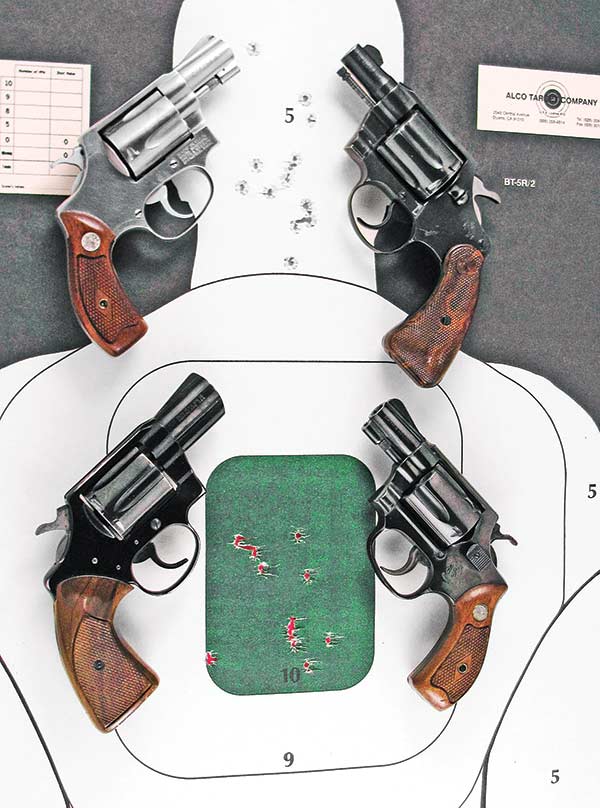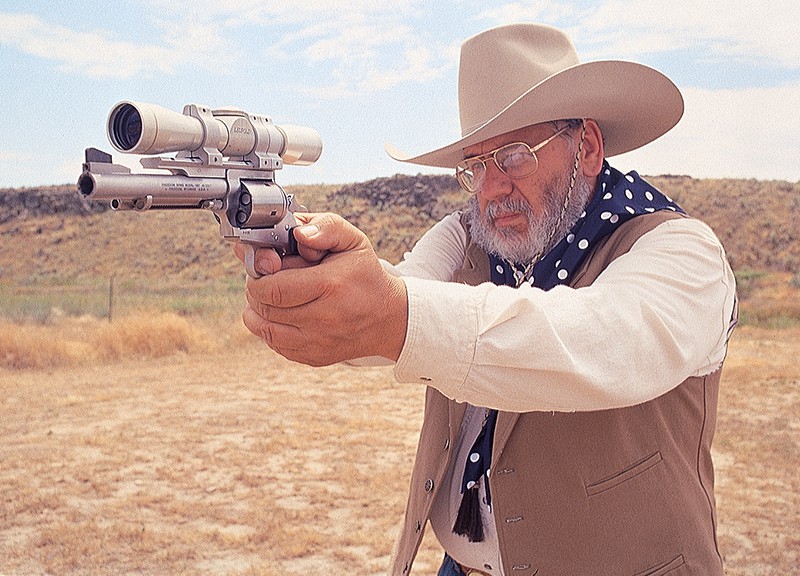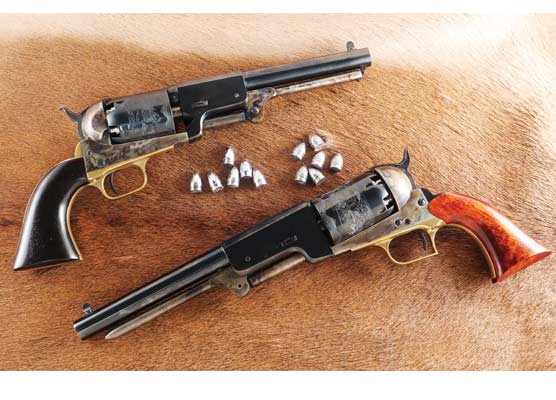Handloading The .38 Special:
The Pocket Pistols
The modern era of the 2″ revolvers/pocket pistol/snub gun/belly gun began in 1926 when Colt introduced the Detective Special by trimming the barrel of their Police Positive .38 Special back to 2″ while keeping the six-shot cylinder. At first they maintained the square butt configuration of the Police Positive, however they soon saw the wisdom of round-butting the grip frame for not only better concealment but also to protect the linings of suit coats. Growing up in the pre-television days, we looked forward to Saturday afternoon matinees and they always featured B-Western movies where the sixgun of choice was the Colt Single Action.
At the same time there were also many detective movies being made and in those the heroes and villains alike were mostly armed with Colt Detective Specials. I still vividly remember Alan Ladd having a Colt Detective Special stored in a special hiding place in his car. In 1950 Colt lightened the Detective Special by using an alloy frame and the result was the Colt Cobra that was the same size as the Detective Special and also maintained the six-shot cylinder.
Smith & Wesson’s M&P of 1899 went through various changes and by the time they reached the Model 1905 4th Change they began, but only rarely, to offer a 2″ version. During WWII they also, again rarely, offered the 2″ Victory Model with its wartime finish. Some 300 of these went to the Department of Defense. After the war there were more 2″ M&P .38 Specials offered. During the 1930s S&W offered their smallish I-Frame 2″ pocket pistol in both .32 and .38 S&W (not Special).
In 1950 S&W slightly enlarged the I-Frame and the result was the quintessential pocket revolver, the J-Frame, five-shot .38 Special. At a convention of police chiefs that year a contest was held to name the new revolver and “Chief’s Special” was chosen. A few years later this would be dubbed the Model 36. In the mid-1950s three more versions of the Chief’s Special arrived, the Airweight/Model 37, the Bodyguard/Model 38 and the Centennial/Model 40. In 1965 Smith & Wesson brought forth the crown jewel of their pocket pistols with the .38 Chief’s Special constructed of stainless steel, as the Model 60. It proved to be the beginning of a long line of stainless steel revolvers and semi-automatics from a long list of manufacturers.
Loading
My bullets of choice for .38 Special Pocket Pistols are cast bullets from Lyman molds, #358477, a 158-grain SWC and the #358311 — the standard round-nosed .38 Special bullet. I also use a lot of Oregon Trail bullets, especially their 158-grain SWC and their 148-grain WC. I feel especially comfortable with the latter bullet with its full blunt nose hitting the target full on.
I do use Unique for 2″ .38 Special loads but my main powder of choice for standard loads is Bullseye. My standard load for Bullseye is 3.5 grains with Bullseye and 5.0 grains with Unique. The latter load gives around 75 more fps velocity. It seems apropos to use Bullseye since both the cartridge and powder are more than a century old, dating back to prior to the turn of the 20th Century. As a matter of fact, the first smokeless powder load for the .38 Special in 1899 used 3.6 grains of Bullseye.
With the two Lyman cast bullets my standard load is 3.5 grains of Bullseye. At the present time my standard load for the Oregon Trail bullets is 2.9 grains of the same powder. I would like to be able to tell you how I went through all the scientific evidence to come up with a charge such as 2.9, however what actually happened is I was loading a large batch of these bullets and at the first setting of my RCBS Powder Measure it dropped 2.9 grains of Bullseye so I simply stayed with it.
In the past, perhaps before I knew better, I’ve used much heavier loads in my Chief’s Special. Elmer Keith pointed out these were extremely strong guns as with their five-shot cylinder the bolt notch was in between chambers so there is no weak spot there. The cylinder also filled out the frame with very little barrel protruding back to the frame in front of the cylinder. In an emergency I would use heavy loads if it were all I had, however perhaps I’m wiser today or just more careful and I stay with standard loads like those listed here.
Medium Frame Loads
In addition to these standard-sized pocket pistols both Colt and S&W have offered medium-frame .38 Specials. Colt very rarely issued the Official Police with a 2″ barrel while S&W did the same with their Military & Police/Model 10 as well as the Airweight version, the Model 12. In addition to all of these classic pocket pistols, there are dozens of currently produced 2″ .38 Specials from not only S&W, but also Charter Arms, Taurus and Harpers Ferry. Some of the newer models are also rated for +P loads.
For many years I carried a big bore single action or double action sixgun, or a semi-auto pistol. They were always comforting, although not always comfortable. However, at this stage of my life I’m more interested in being comfortable than feeling comforted. I always have a J-Frame pocket pistol where it should be — in my pocket. It’s either one of these classic .38 Specials, or more likely a J-Frame .357 Magnum loaded with +P .38 Specials.
There was a time in my life when I felt the need to be armed very discreetly and at the time I could not risk anyone brushing up against me and discovering the firearm. For all these years my weapon of choice was an S&W .38 Chief’s Special in the top of my boot. It was certainly just as easy, actually easier to get to it, than if it was carried in an ankle holster and was always at the ready. I was not armed for battle or to fight a war but simply for last-ditch protection for me and mine.
I not only felt comfortable — I was definitely comforted. This particular Chief’s Special has been customized by Teddy Jacobsen who tuned the action and bobbed the hammer, and also finished it with MetaLife giving it a stainless steel appearance.










